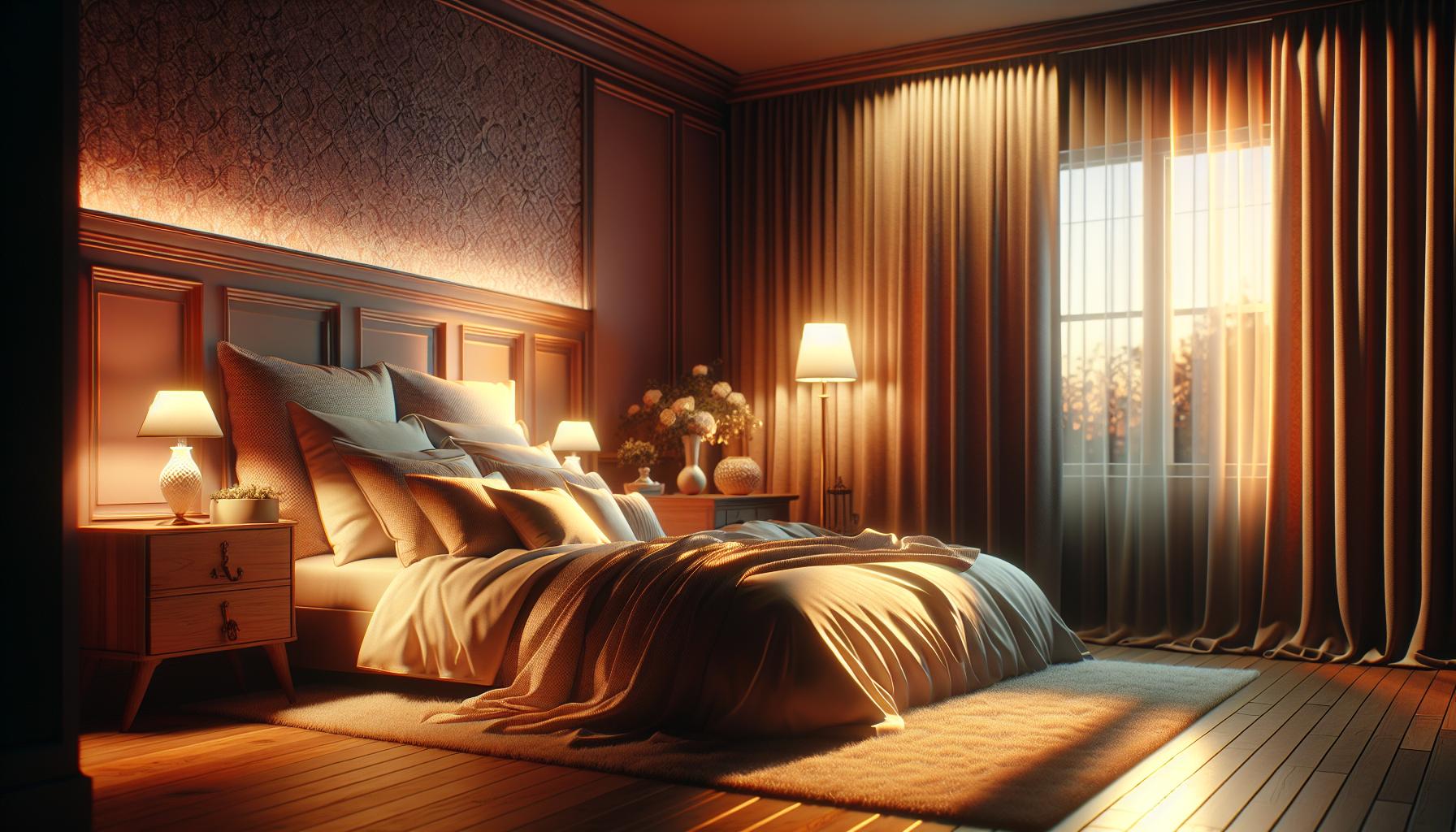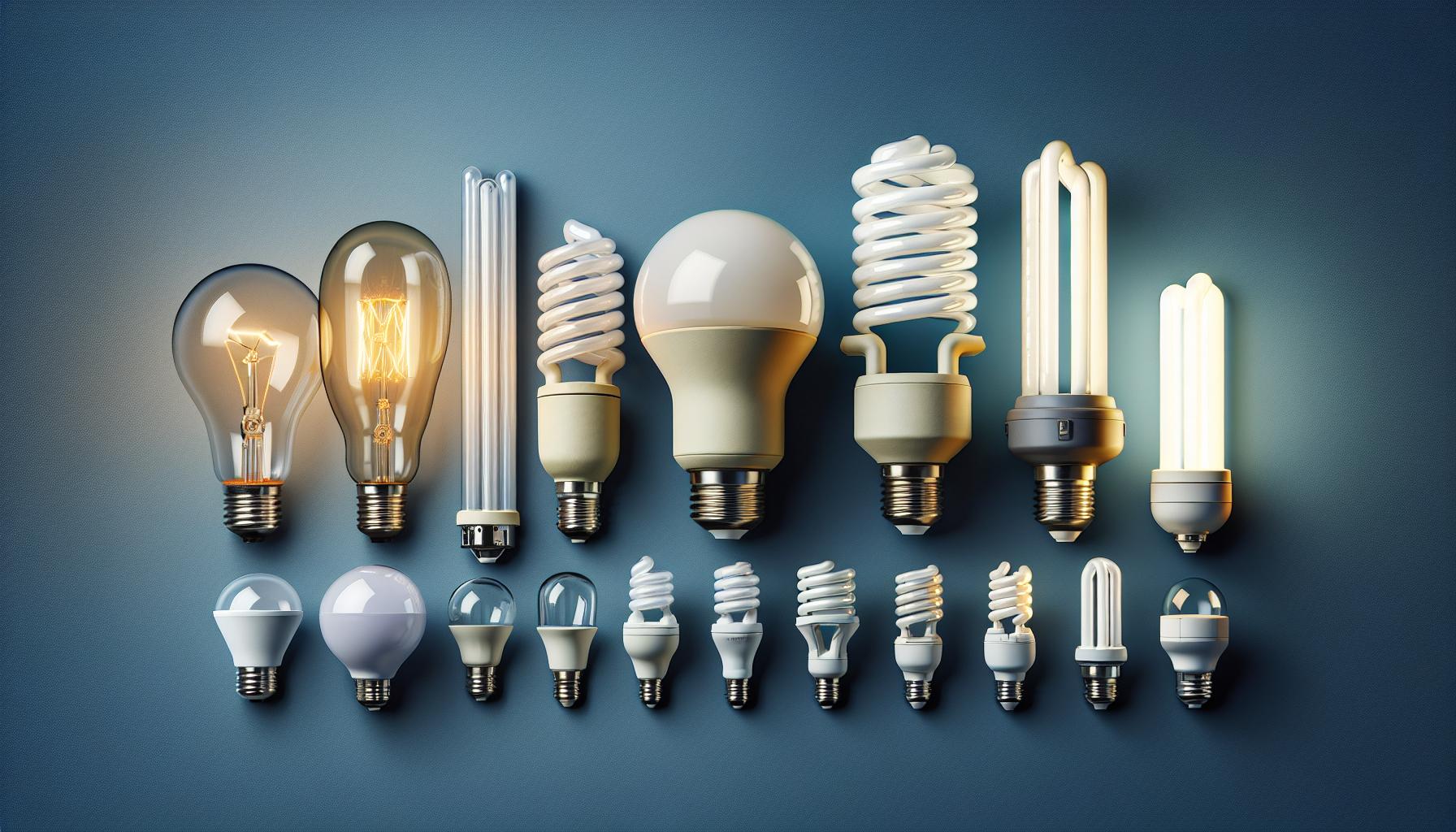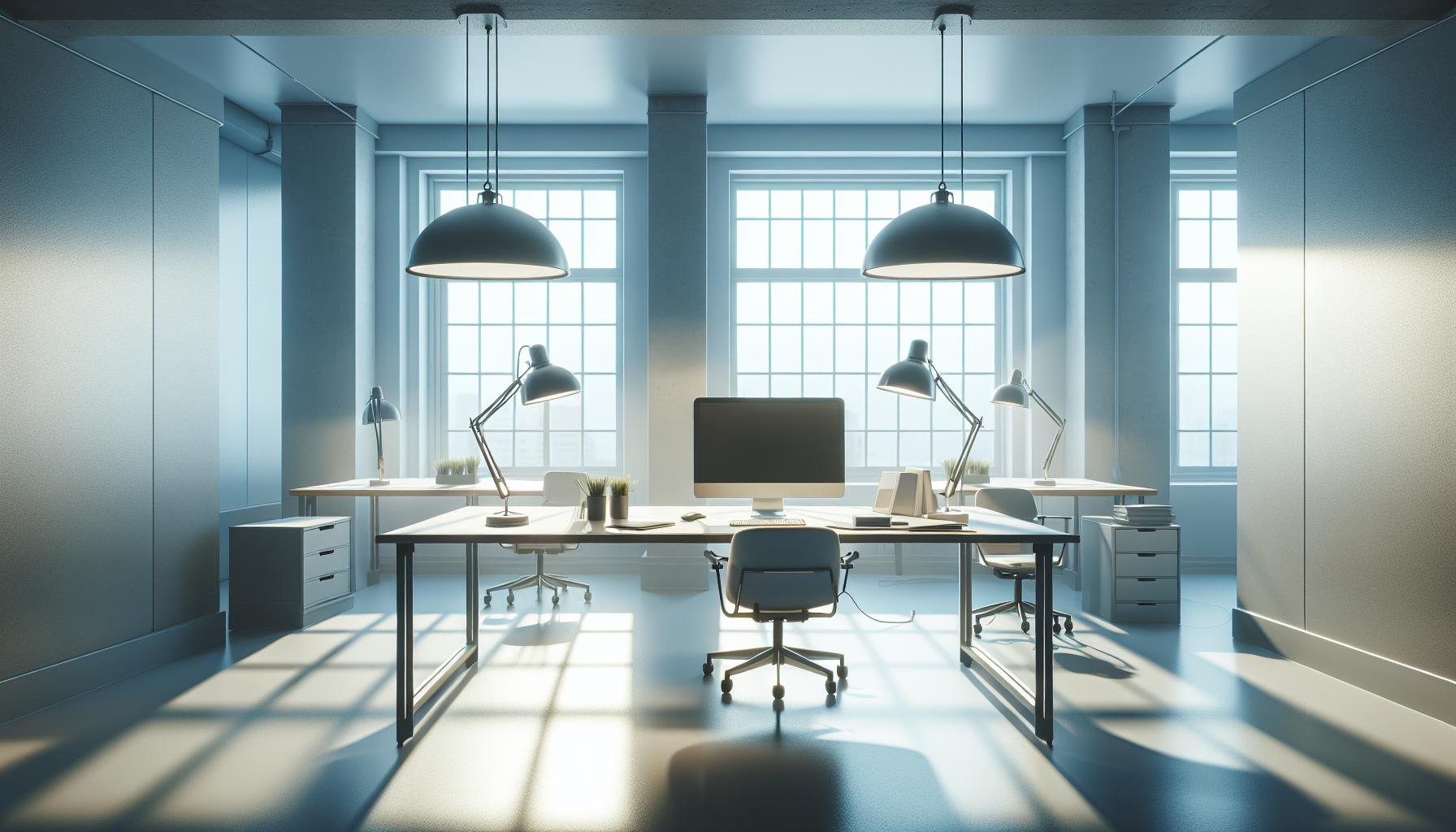Ever wondered if the light bulbs flickering above your head could be affecting your health? It’s not just about setting the mood or keeping the dark at bay—your choice of lighting might have more impact than you think.
From the soft glow of incandescents to the bright sheen of LEDs, light bulbs come in all shapes and sizes, but they also bring along a mixed bag of health concerns. Let’s shed some light on the subject and find out if these everyday illuminators could be friend or foe to your well-being.
Navigating the maze of information can be tricky, but don’t worry—you’re about to get a clear view. Fasten your seatbelt as we dive into the world of lumens and watts to uncover the truth behind light bulbs and health.
Health Effects of Different Types of Light Bulbs
When you’re considering the health implications of the bulbs that illuminate your home, understanding the variety of available lighting is crucial. Let’s light up the subject.
Incandescent bulbs, the classic types of light sources, are known for their warm glow. However, they’re not just about cozy ambiance. They can emit a spectrum of light that’s similar to natural sunlight. This could be less disruptive to your circadian rhythm compared to the cooler light spectra. That being said, they’re not as energy-efficient and have a shorter lifespan, which means you’ll be replacing them more frequently.
Moving on to fluorescent bulbs, which are a common sight in offices and schools, they’re lauded for their energy efficiency. However, they can be a different story for your wellbeing. These bulbs sometimes emit a small amount of ultraviolet (UV) radiation. Prolonged exposure to UV radiation is a known health risk, and it could potentially lead to skin issues or exacerbate conditions like lupus.
Compact Fluorescent Lamps (CFLs), a type of fluorescent light, are much the same but more suitable for domestic use. They use less energy than incandescent bulbs but bring similar concerns regarding UV radiation, especially if the phosphor coating inside the lamp is compromised.
LED bulbs are the game-changers in the industry. They’re incredibly energy-efficient and long-lasting. But there’s a catch. Some LEDs emit light with a high blue light content, which can interfere with sleep patterns by inhibiting melatonin production. It’s essential to consider bulbs labeled as “warm white” or those with a lower color temperature to minimize this effect.
Lastly, there’s the innovative halogen bulbs, which operate similarly to incandescent bulbs but are more energy-efficient. While they offer a natural light quality, they can run quite hot and may present a burn hazard if touched directly.
- Incandescent: Warm light, less energy-efficient
- Fluorescent: Energy-saving, emits UV radiation
- CFLs: Household energy-saver, UV concerns
- LEDs: Longevity and efficiency, potential blue light exposure
- Halogen: Natural light, can be very hot
Blue light and Its Impact on Sleep
You’ve probably heard the buzz about blue light and its possible effects on your sleep patterns. The light emitted by LEDs, which are praised for their energy efficiency, does indeed have a dark side. LEDs typically emit a higher concentration of blue light compared to other light sources, and this is where things get interesting for your Z’s.
Blue light, a component of the visible light spectrum, is beneficial during daylight hours because it boosts attention, reaction times, and mood. Unfortunately, it’s a different story at night. Exposure to blue light in the evening can mess with your circadian rhythm by suppressing the secretion of melatonin, the hormone that tells your body it’s time to sleep.
Imagine your bedroom as a haven for rest, but it’s bathed in a glow that’s telling your brain it’s still daytime. That’s what blue light does – it tricks your mind into thinking it should stay wakeful when you’re actually trying to wind down. Given our increased use of electronic devices with LED screens and energy-efficient home lighting solutions, you’re likely exposed to more blue light in the evenings than your body would prefer.
Here’s What You Can Do:
- Switch to red or warm-colored lights in the evenings as they have the least power to shift circadian rhythm.
- Consider wearing blue light blocking glasses when using electronic devices late in the evening.
- Install apps that filter the blue/green wavelength on your phone or computer.
« What to Do If LED Light Bulb Breaks at Work: Your Ultimate Cleanup Guide
Where is Light Bulb Made? Unveiling the Global Trade Secrets »
For those night owl DIY projects, it might be tempting to keep your workspace bright with cool, blue-tinted bulbs, but it’s better to opt for lighting solutions that mimic the sunset. The warmer the light, the less likely it will hamper your trek to dreamland.
Even as you aim to make your home energy efficient, pay attention to how the lighting affects your natural sleep cues. Strike a balance between enjoying the benefits of modern lighting technology and ensuring that these advances don’t interfere with your nocturnal rest. Keep tweaking your lighting choices to find what works best for a tranquil night’s slumber – because a well-rested you is more productive, happier, and healthier.
Flickering Lights and Eye Strain
Flickering in light bulbs is not just a nuisance; it can have adverse effects on your health, particularly your eyes. When a light flickers, your pupils constantly adjust to the changing brightness, which can lead to eye strain and discomfort. If you’ve ever spent hours under inconsistent lighting, you might’ve noticed the toll on your eyes, manifesting as fatigue, headaches, or even migraines.
But what causes flickering? A few key culprits:
- Voltage fluctuations
- Loose connections
- Faulty light switches
- Incompatibility with dimmer switches
In your DIY lighting projects, addressing these issues can make a world of difference. Make sure your electrical connections are secure and your bulbs are compatible with your home’s fixtures and dimmers. Remember, it’s not just about aesthetics; you’re safeguarding your health.
LED bulbs are touted for their longevity and energy efficiency, yet not all LEDs are created equal. Some may flicker due to dimmer incompatibility or low-quality drivers. To ensure eye comfort, opt for flicker-free LEDs that explicitly state compatibility with your dimmer switches.
Other lighting options are safer for the eyes. Consider incandescent bulbs, which provide a steady light that reduces flicker-related strain. Or you could explore high-quality CFLs, knowing they might still emit a faint flicker – one that’s less noticeable but still there.
When you’re in your workspace, flickering lights are the last thing you want undermining your focus and productivity. If you’re looking for an update or considering a lighting overhaul, remember that the health of your eyes should be just as important as the project at hand. Your lighting choices should foster a comfortable and strain-free environment, ensuring that every moment you spend on your passion projects is as enjoyable as it should be.
UV Radiation from Light Bulbs
You’ve probably heard the buzz about ultraviolet (UV) radiation and its effects on health when it comes to sun exposure, but you might not be aware that it’s not just the sun you should be mindful of. Certain types of light bulbs can also emit UV radiation, and understanding this can help you make smarter choices for your home lighting.
Incandescent bulbs, your good old friends that produce a warm and inviting light, emit very low levels of UV radiation. So if you’re going for a cozy, sun-like ambiance without the UV concern, these bulbs can be a safe bet. However, remember that they’re not champions in energy efficiency, and that might nudge your decision if you’re both health- and eco-conscious.
On the flip side, fluorescent bulbs are more energy-efficient but have a bit of a dark side. They produce small amounts of UV radiation. While this might sound alarming, it’s worth noting that the UV levels are typically far lower than what you’d face on a sunny day outside. Yet, for those particularly sensitive to UV exposure or for businesses where people are under these lights for prolonged periods, it could be an area to pay attention to.
Compact Fluorescent Lamps (CFLs) are a type of fluorescent bulb fine-tuned for more widespread domestic use, and yes, they too emit a small dose of UV radiation. Improvements in CFL technology have led to lower UV emissions, and some come with a protective coating to further cut down on the exposure. This makes them more suitable for use in lamps and ceilings in most homes.
Switching to LED bulbs might seem like the ultimate solution given their impressive energy efficiency and longevity. However, some LED lighting can emit a form of UV radiation. The good news is that many LEDs on the market are designed to minimize UV emissions, making them a safer choice, especially if you’re working on a DIY project or spending a lot of time under artificial light.
The Importance of Proper Lighting in Workspaces
When you’re planning your workspace, whether it’s a cubicle, a workshop, or a home office, the type of lighting you choose plays a crucial role in not only your health but also your productivity and comfort. Poor lighting can lead to eye strain, fatigue, headaches, and even mood changes. Proper lighting, on the other hand, can dramatically improve your work experience.
First off, it’s all about balance. You’ve probably noticed that too much artificial light or overly bright lights can be overwhelming and even lead to migraines. Yet, too dim, and you’re squinting at your computer screen, which is just as bad. Aim to get a mix of natural light if possible, supplemented with artificial light that mimics daylight. This combo helps keep your circadian rhythms in check, reducing the risk of sleep disturbances caused by exposure to excessive amounts of blue light from LEDs.
- Ensure your artificial lighting is bright enough to prevent straining your eyes.
- Position lights to minimize glare on your screen.
- Consider task lighting for specific activities like reading, writing, or crafting.
Adjustability is key. The ability to dim your lights or change the color temperature can help create the ideal conditions for different types of work. A well-lit environment improves focus and helps maintain attention, reducing the need for frequent breaks due to eye discomfort. LEDs have the distinct advantage of typically allowing for such adjustments without flickering or giving off too much heat.
Moreover, bear in mind that the positioning of your lighting sources is just as important as the light itself. Overhead lighting can cast shadows, especially if it’s not situated directly above your work area. Therefore, incorporating Desk Lamps or Standing Lamps that you can move around can eliminate those pesky shadows and ensure that light falls exactly where you need it.
Remember, it’s the little things that count. Sometimes, a simple change in your light bulb can make a world of difference in your workspace. As a light bulb enthusiast who loves a good DIY project, finding the right lighting is an adventure in itself. So go ahead, play around with placement, intensity, and color until your workspace is just as comfortable, productive, and, most importantly, as healthy as it can be.
Conclusion
So there you have it, your guide to navigating the complex world of light bulbs and their impact on your health. Remember that the right lighting can make a world of difference to your daily comfort and productivity. It’s all about balance and being mindful of how artificial light affects you. Don’t overlook the power of making minor tweaks in your environment. After all, it’s the small changes that often lead to the biggest benefits for your well-being. Now go ahead, shine a light on better health by making those smart lighting choices for your space!
Frequently Asked Questions
What are the different types of light bulbs mentioned?
Different types of light bulbs include incandescent, fluorescent, LED, and halogen bulbs. Each has a unique impact on health and workspace environments.
How can proper lighting affect productivity?
Proper lighting can enhance productivity by reducing eye strain, improving mood and energy levels, and providing adequate illumination for tasks.
What tips does the article provide for ideal lighting conditions?
The article suggests balancing natural and artificial light, preventing eye strain, minimizing glare, and considering task-specific lighting to create ideal conditions.
Why is adjustability important in lighting?
Adjustability in lighting allows individuals to modify brightness and positioning, leading to better comfort, less eye strain, and an overall healthier work environment.
How does the positioning of lighting sources impact well-being?
Correct positioning of lighting sources can prevent shadows and glare, which in turn reduces eye strain and headaches, thus improving overall comfort and well-being.
Can changing a light bulb improve workspace health and comfort?
Yes, making small changes, like choosing the right type of light bulb, can significantly improve the comfort and health qualities of a workspace.





